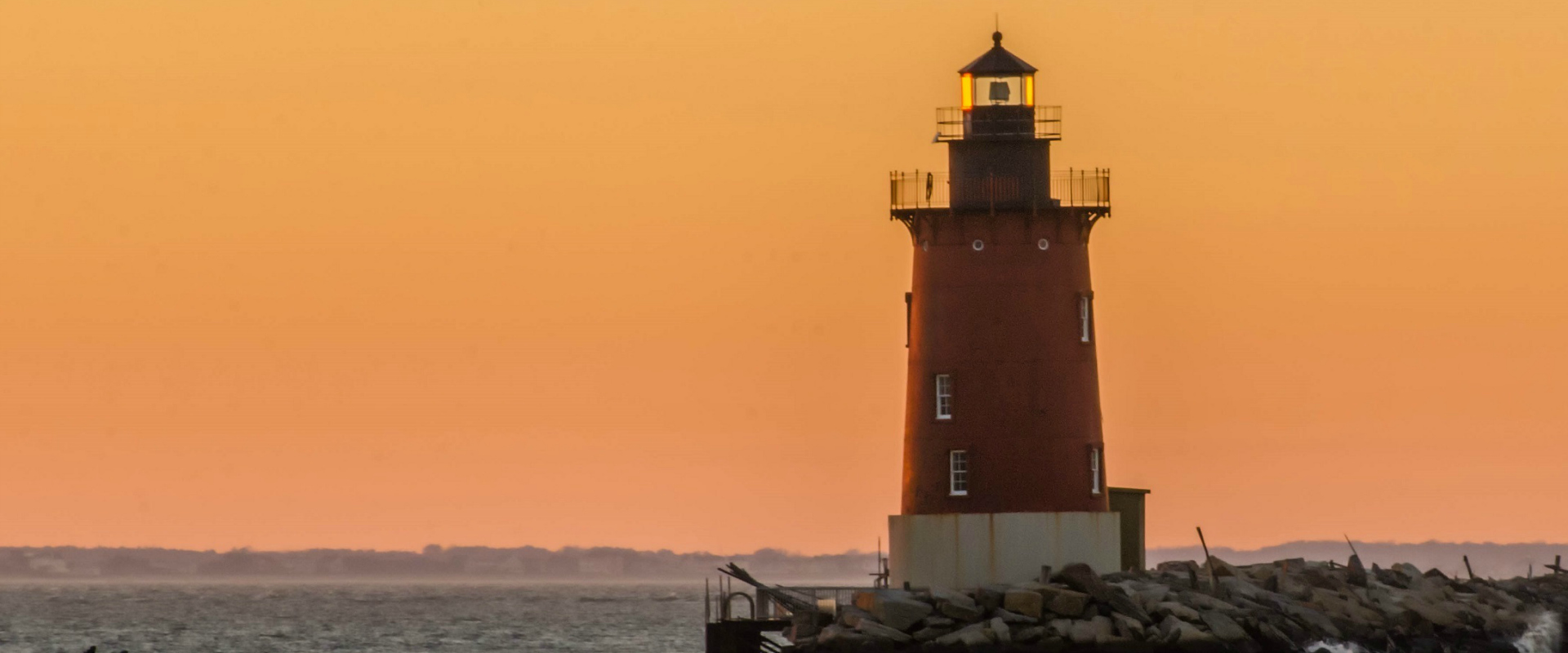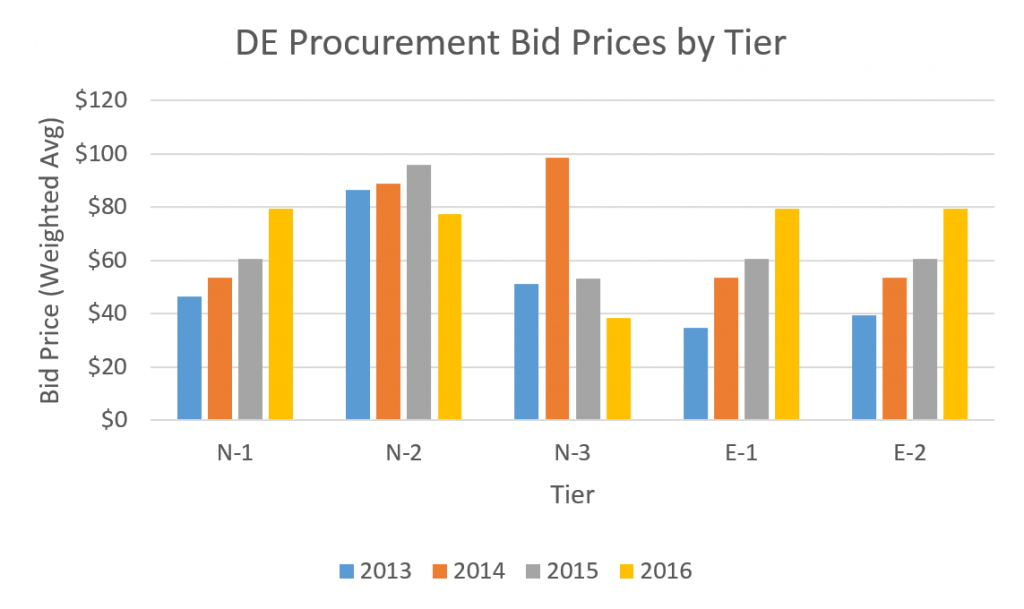The Basics
In 2011, Delaware’s renewable portfolio standard (RPS) was amended to make electric distribution companies rather than state power providers responsible for purchasing solar renewable energy credits (SRECs). With this switch, Delmarva Power became the largest SREC purchaser in Delaware. This led to the creation of the Delaware Procurement Program. Under this program customers can bid into 20-year fixed price contracts with Delmarva Power rather than selling SRECs on the spot market like in other states.
SREC Delaware is the entity in charge of managing this procurement, and it has announced the solicitation window for this year’s procurement program. This year’s bid window opens on May 29th at 9:00 AM and will remain open until June 9th at 5:00 PM. Winners will be announced on June 15th. Both new and existing solar energy systems of all sizes are eligible to bid, provided they either have a Delaware SREC certification number or submit a bid deposit. Systems that win a bid will be locked into a 20-year contract for their SRECs with Delmarva Power. This 20-year contract is divided in half. The price per SREC for the first 10 years of the contract will be at the accepted bid price, and the last 10 years will be fixed at $35 per SREC.
Similar to past procurements, this year’s procurement aims to provide SREC price stability in the state, to give Delmarva another avenue by which to meet their long-term SREC compliance requirements, and to encourage solar development in Delaware. Since the inception of the program in 2012, Delaware has seen a steady increase in solar development. Prior to 2012, there were 25MW of solar in the state. From 2012 to 2016, 71MW were installed according to GTM’s 2016 Solar Market Insight Report. SEIA now ranks Delaware 30th in the country with 363 solar jobs.
What’s New This Year?
This year the Solicitation will consist of seven tiers, rather than 2016’s five. The additional two tiers will allow both new and existing systems above 2MW to bid into the procurement. New systems are defined as those with final interconnection approval after June 10th, 2016, and existing systems are those interconnected before this date.
Tiers N-1, N-2, N-3, E-1, and E-2 will competitively bid for the first 10,000 SRECs. Systems over 2MW, tiers N-4 and E-3, are excluded from the first round of bidding. However, after the first 10,000 SRECs have been procured, Delmarva is then able to procure up to 10,000 additional SRECs. This is an increase from 2016’s 6,000 additional SRECs. These additional 10,000 SRECs will be procured using the least expensive available SRECs from any tier, including N-4 and E-3. Additionally, if any of the tiers in the initial round are undersubscribed, any tier can then bid to make up for those, as was seen in 2016’s procurement.
The exact breakdown of SRECs per tier is shown in Figure 1 (below).
| Generating Unit Tier Designations | ||
| New Systems (interconnection after June 10th, 2016) | ||
| Tier | Nameplate Rating (DC at STC) | SRECs in Tier |
| N-1 | Less than or equal to 25kW | 4,400* |
| N-2 | Greater than 25kW but less than or equal to 200kW | 2,300 |
| N-3 | Greater than 200kW but less than or equal to 2MW | 2,300 |
| N-4 | Greater than 2MW | 0-10,000 |
| Existing Systems (interconnection before June 10th, 2016) | ||
| Tier | Nameplate Rating (DC at STC) | SRECs in Tier |
| E-1 | Less than or equal to 25kW | 4,400 Pool* |
| E-2 | Greater than 25kW but less than or equal to 2MW | 4,400 Pool* |
| E-3 | Greater than 2MW | 0-10,000 |
*Tiers N-1, E-1 and E-2 bid for the same pool of 4,400 SRECs
What Have Winning Prices Been in the Past?
2016’s procurement saw a higher than anticipated volume of SRECs bid into the procurement, and Delmarva decided to buy the excess 2,446 SRECs. However, for the first time, some of the tiers were undersubscribed, while others were oversubscribed. Last year, tiers N-1, E-1, and E-2 were undersubscribed, and N-3 low-priced excess bids helped to fill these spots. As a result, in 2016, tiers N-1, E-1, and E-2 saw an increase in the winning bid prices for the initial tiers, while Tiers N-2 and N-3 saw a decrease in winning bid prices due to oversubscription. The results of 2016’s procurement can be seen in Figure 2 (below).
| Tiers | N1/E1/E2 | N2 | N3 | N1/E1/E2 Plus N3 To Fill | Additional SRECs | Overall Solicitation |
| High | $99.99 | $95.48 | $50.00 | $99.99 | $78.98 | $99.99 |
| Low | $25.00 | $49.00 | $29.98 | $25.00 | $73.80 | $25.00 |
| Weighted Average | $79.26 | $77.34 | $38.39 | $69.34 | $77.93 | $66.56 |
For tiers N-1, E-1, and E-2, the 2016 procurement results were higher than weighted averages of prior years. Results from prior years can be seen in Figure 3 (below), which represents weighted average of the procurement program’s results back to 2013.
Advice for Bidding and if You Win
Once the bidding window opens, applications can be completed on the SREC Delaware website. Applications must include the expected number of SRECs that will be generated and the bid price per SREC for the first 10 years of the contract. To avoid the chance of ties, bids can be submitted in dollars and cents. If a tie does occur, preference is given to systems with Delaware parts and labor.
Additionally, for systems over 2MW, it is worth noting that if the bid price for the initial 10 years is under $35, then the 20-year contract will be at that price for its entire term. It will not increase to $35 after the first 10 years. This could be put in place to discourage bids of “zero,” which could be a winning strategy, but skew market pricing.
For systems with winning bids, the contract with Delmarva will start with SRECs produced from June of 2017 onwards. For each system, Delmarva will purchase all of the SRECs included in the initial bid amount annually plus excess SRECs of up to 10 percent. For systems larger than 500kW, there is a production requirement. Systems that produce at 80 percent or less will be asked to pay damages equivalent to five percent of the annual price for the first 10 years and 10 percent of the annual price for the last ten.
Conclusion
If you’re a new or existing system in Delaware, it’s time to start thinking about whether you’d like to bid into the program, and if so, what your bid price will be. The Delaware, SREC spot market has been on a steady decline, trading around $7 upon writing of this blog, and winning a spot in the procurement program offers a long-term, known SREC income for your system.
We are happy to help answer questions on applications and can help represent your system if you successfully win a bid.
ABOUT SOL SYSTEMS
Sol Systems, a national solar finance and development firm, delivers sophisticated, customized services for institutional, corporate, and municipal customers. Sol is employee-owned, and has been profitable since inception in 2008. Sol is backed by Sempra Energy, a $25+ billion energy company.
Over the last eight years, Sol Systems has delivered more than 600MW of solar projects for Fortune 100 companies, municipalities, universities, churches, and small businesses. Sol now manages over $650 million in solar energy assets for utilities, banks, and Fortune 500 companies.
Inc. 5000 recognized Sol Systems in its annual list of the nation’s fastest-growing private companies for four consecutive years. For more information, please visit www.solsystems.com.




